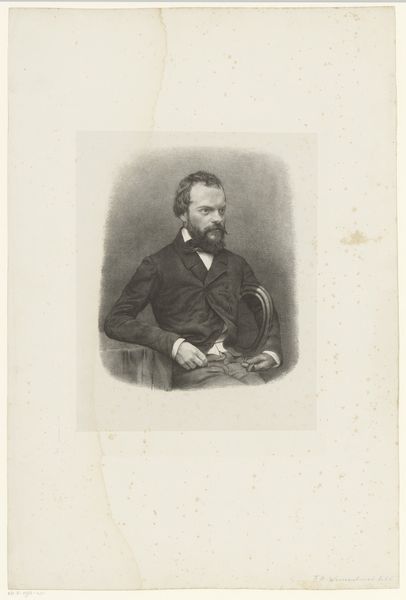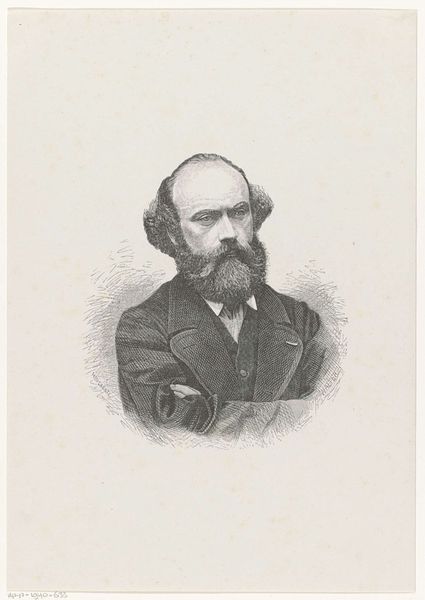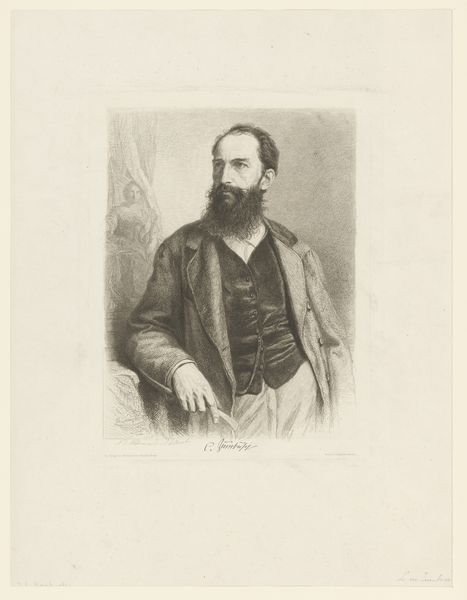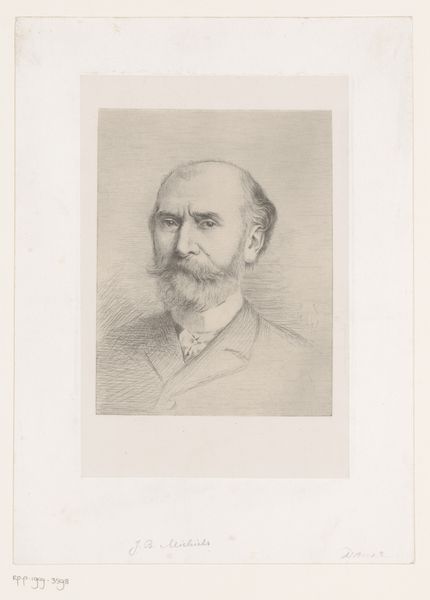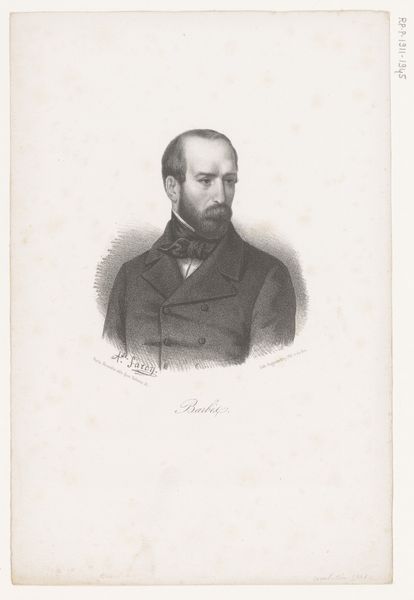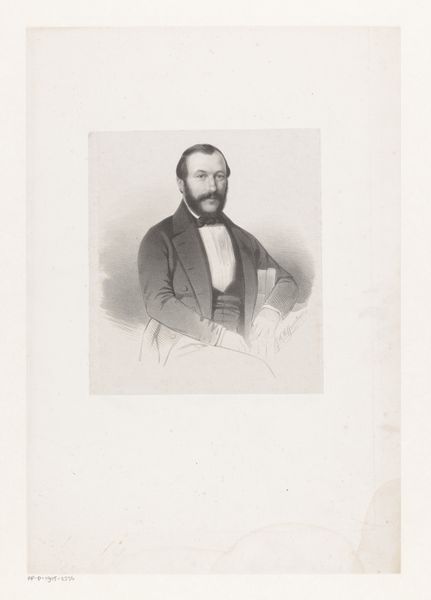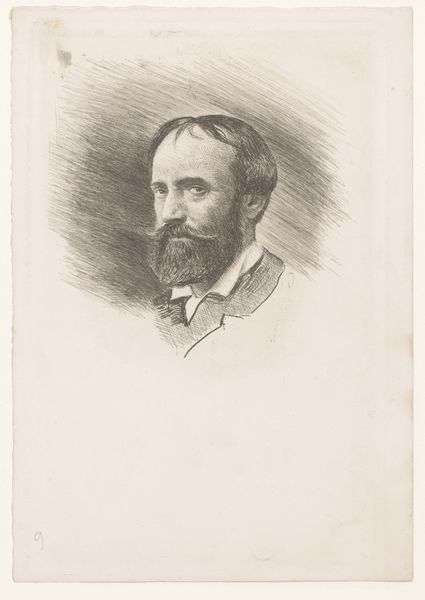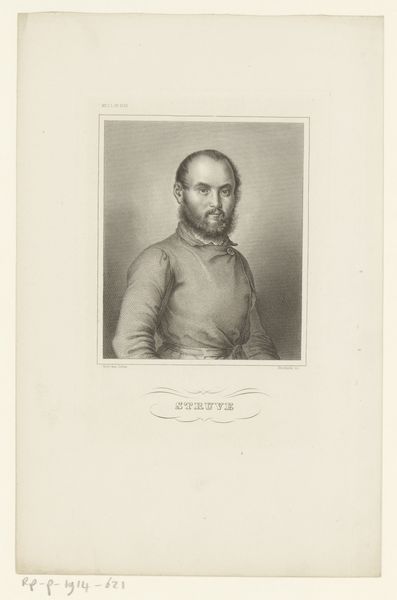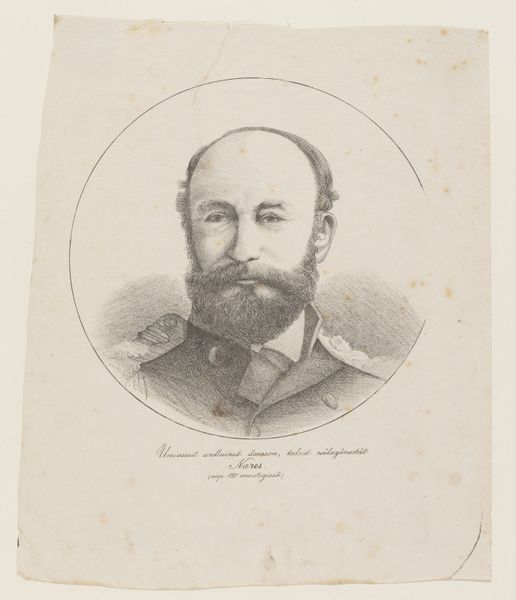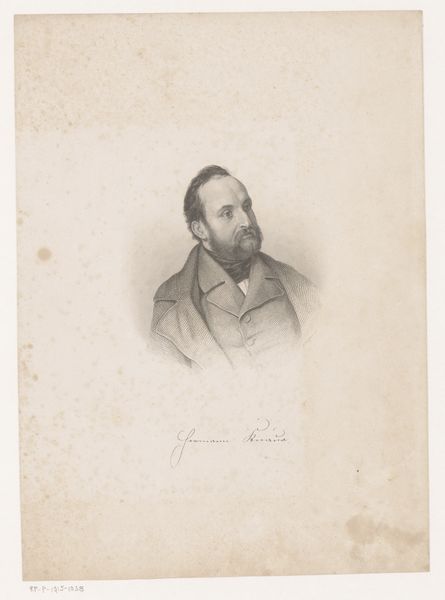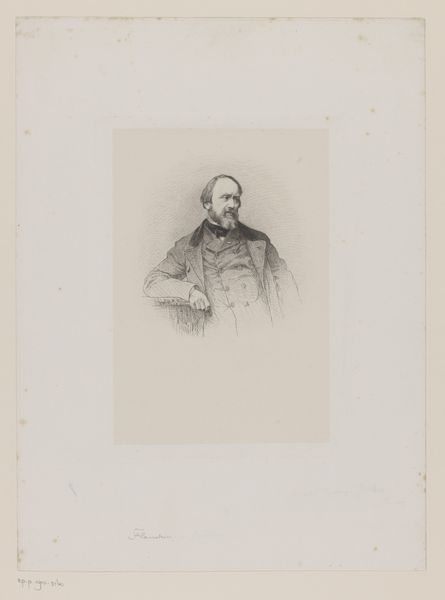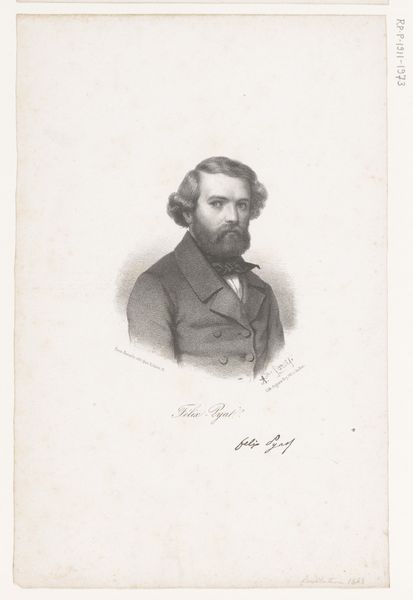
drawing, pencil
#
portrait
#
drawing
#
figuration
#
pencil drawing
#
pencil
#
line
#
realism
Dimensions: height 324 mm, width 245 mm
Copyright: Rijks Museum: Open Domain
Curator: Looking at this drawing, “Portret van Joseph Knabl,” attributed to Johann Leonhard Raab and created sometime between 1840 and 1899, the most striking thing is the density achieved with simple pencil. Editor: It definitely has a somber quality. His penetrating gaze and formal attire suggest a man of serious conviction, possibly intellectual or even burdened. Is there any social context to consider here? Curator: Given the period, portraits like this would have served a very specific function within a developing bourgeois society: The material process of making such an artwork, and how that contributes to making this individual recognizable—not only to contemporaries but also to a potentially much wider future audience—is crucial. Think about the paper and the quality of the pencil itself—these are material investments. Editor: Precisely. And that investment tells us about more than just wealth; it speaks to power structures of the time. I wonder, was Knabl a prominent figure? The way he holds what looks like a manuscript, carefully, but firmly, almost certainly signals to his intellectual or professional status. Curator: Well, consider the technique— the linework varies in weight to describe both form and texture, creating highlights that emphasize light falling on his face and hands. It indicates a skill in craftsmanship. The use of simple lead transformed into detail shows Raab's adept control of the medium. Editor: The detail in those hands are remarkable indeed—I see so much in them. Hands of labor and thought, combined. Did Knabl possibly commission it as an indication of professional status? We must account for that relationship of labor here. Curator: Perhaps it’s important not just who he *was*, but who the patrons *were*, what demands that had of the artwork itself. As well as considering those who *consume* artworks in such styles, since it must serve specific functions for all actors involved in its being produced, distributed, or perceived! Editor: It prompts questions about the nature of representation, then, and whose stories get told. Perhaps a wider understanding of his political milieu is vital in decoding it. Still, that intent gaze of his haunts the viewer. Curator: Yes, absolutely. The social implications of a “realist” pencil drawing cannot be decoupled from the function for artist, sitter, patron and later art historians! I leave feeling inquisitive to discover if further sources can unravel additional interpretations regarding that social tapestry which gave rise to its being made. Editor: Agreed. And in the act of further contextualization of that socio-political reality perhaps an element of empathy would enrich our own reality!
Comments
No comments
Be the first to comment and join the conversation on the ultimate creative platform.

